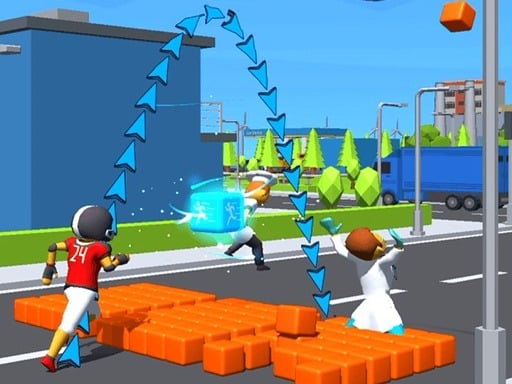
With the help of their teachers and families, students develop personal fitness regimes, adapted to their individual skills and needs. Every year, student athletes compete in Eastern Athletic Association for the Blind (EAAB) events, including swimming, wrestling, cheerleading, goalball and track. Perkins commitment to physical education remains strong to this day. In the 1970s and ’80s, yearbook biographies of graduating seniors often highlighted their achievements in wrestling, track, swimming, baseball, basketball, bowling and gymnastics, among other sports. In June, the residential cottage with the most points won a trophy or a banner that students proudly hung in their living room. Starting in 1917, Perkins boys and girls both participated in on-campus athletic competitions that continued throughout the academic year.

In the years that followed, students at Perkins competed against local public and private schools, as well as other schools for the blind. Shortly after the move to Watertown, the boy’s athletic team beat Framingham High School in an indoor track meet hosted at Perkins. The spacious new 38-acre campus included a small pond for rowing and skating, while the main building housed a swimming pool, bowling alley, gymnasium and an elevated track with special hand guides for the runners. In 1912 Perkins moved to its current home in Watertown, Massachusetts. Playground equipment was installed Perkins’ South Boston and Jamaica Plain campuses in 1908 and was instantly popular. The new campus included miles of walking paths and was close to the Atlantic Ocean, which the boys bathed in daily – even in cold weather. In 1839 the school took over the former Mount Washington House hotel in South Boston.

With fresh air and exercise, students at Perkins grew stronger and had more energy to tackle their increasingly rigorous schedules. Perkins School for the Blind’s first director, Samuel Gridley Howe, believed that such a cautious approach was unnecessary, so he encouraged students at Perkins to play and exercise during their recess breaks each day. Fearing they might be injured, their families discouraged them from enjoying physical activity – treating them as invalids and preventing them from running, jumping and playing.

When Perkins opened its doors in 1832, children who were blind were often assumed to be weak and vulnerable to illness.


 0 kommentar(er)
0 kommentar(er)
